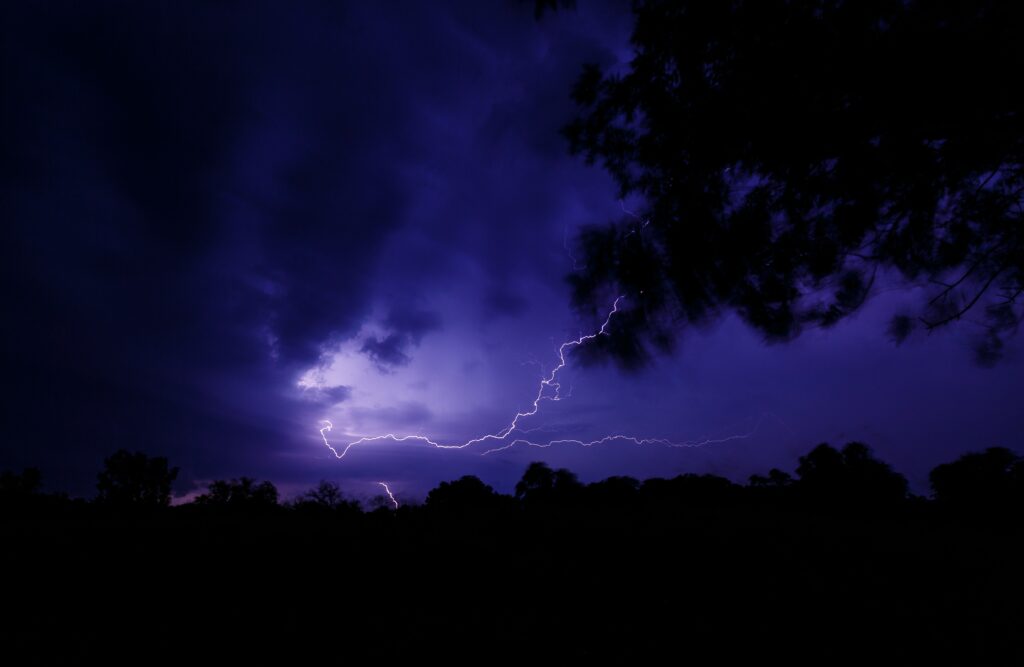Imagine waking up to a beautiful snowy morning. The world outside is covered in a pristine white blanket, and you can’t help but wonder, do solar panels still work in snowy conditions? It’s a valid question that many people have, especially those who live in areas with harsh winters. In this article, we’ll explore the fascinating world of solar panels and learn whether they can still harness the power of the sun, even in the midst of a winter wonderland. So let’s put our curiosity to rest and find out if solar panels truly work their magic in the snow!

Understanding How Solar Panels Work
Solar panels are a crucial component of harnessing solar energy to generate electricity. Understanding how solar panels work is the first step in comprehending their efficiency and the impact of weather conditions on their performance.
Basics of solar energy conversion
Solar panels work by converting sunlight into usable electricity through a process called the photovoltaic effect. Within the solar panel, numerous solar cells are made up of semiconductive material, usually silicon. When sunlight hits the surface of the solar cell, it energizes the electrons within the material, creating an electric current. This direct current (DC) is then converted into alternating current (AC) by an inverter, which can power electrical devices in homes or be fed into the electrical grid.
Role of sunlight in generating electricity
The key ingredient for solar panels to generate electricity is, of course, sunlight. Sunlight is made up of tiny particles of energy called photons, which carry solar radiation. When photons hit the solar cells in a solar panel, they excite the electrons within the silicon atoms, causing them to move and create an electric current. The intensity and duration of sunlight directly affect the productivity of solar panels.
Important components of solar panels
Solar panels consist of several crucial components that work together to convert sunlight into electricity. The most recognizable part is the photovoltaic module, made up of individual solar cells. These cells are connected by electrical wiring and protected by a glass or plastic cover. Behind the cells, there is a layer of supportive materials and a backsheet that protects the electrical components from environmental factors. Finally, the frame of the solar panel provides structural support and enables easy installation.
Effect of Weather on Solar Panel Efficiency
Weather conditions play a significant role in the efficiency of solar panels. Different climates and seasonal changes can impact the amount of sunlight received by solar panels and, subsequently, their energy output.
Impact of seasonal changes
Seasonal changes, especially in regions with distinguishable seasons, can have a noticeable impact on solar panel efficiency. During winter, shorter daylight hours and lower angles of the sun can result in reduced solar energy production compared to longer, sunnier days in the summer. However, this does not mean solar panels are ineffective during winter months. They can still generate electricity, albeit at a slightly lower efficiency.
Performance of solar panels in different climates
Solar panels can perform well in a wide range of climates, from hot and sunny regions to cooler and cloudier areas. While panels thrive in direct sunlight, they can still generate electricity under cloudy or overcast skies. However, the overall energy output may be lower due to reduced sunlight intensity. On the other hand, panels in extremely hot climates may face challenges with overheating, which can decrease efficiency. Finding the right balance of climate conditions is crucial for optimal solar panel performance.
Mitigating weather-related challenges
To mitigate weather-related challenges for solar panels, certain measures can be taken. Ensuring proper maintenance, regularly cleaning the panels, and ensuring optimal panel placement and angle can maximize energy production. Additionally, technological advancements, such as snow sensors, heating systems, and automatic snow removal systems, have been developed to address specific weather conditions and increase solar panel efficiency.

Snow and Solar Panels
Snow is a common weather phenomenon in many regions, and it poses unique challenges to solar panel operation. Understanding the effects of snow on solar power generation can help mitigate these challenges and ensure effective energy production throughout the winter months.
Role of temperature in solar panel operation
Temperature plays a significant role in solar panel operation, and snowfall often coincides with colder weather conditions. Solar panels perform best at cooler temperatures, as excessive heat can lead to decreased efficiency. However, snow covering the panels can further impact their performance by blocking sunlight and preventing the conversion of solar energy into electricity.
How snow affects solar power generation
Snow accumulation on the surface of solar panels limits their exposure to sunlight, reducing their capacity to generate electricity. Even a thin layer of snow can have a significant impact on energy production. The white color of snow can also cause reflected light to scatter, leading to reduced absorption by the solar cells. This phenomenon further diminishes the efficiency of solar panels during snowy periods.
Dynamics of reflected light off snow
When sunlight hits snow-covered panels, a portion of the light is reflected off the surface. This reflected light can bounce back onto the snow, increasing the overall energy absorbed by the snowpack. However, this absorbed energy does not directly contribute to electricity generation. Instead, it accelerates the melting process of the snow, allowing the solar panels to become exposed again.
Effect of Snow Coverage on Solar Panels
Snow coverage on solar panels has a direct impact on their efficiency. Understanding the extent of this impact and potential damages caused by heavy snowfall is crucial in maximizing solar panel performance in snowy conditions.
How snow coverage reduces solar panel efficiency
Snow coverage directly reduces solar panel efficiency by blocking sunlight and preventing the photovoltaic cells from converting solar energy into electricity. The more snow covering the panels, the lower the energy output.
Potential damages caused by heavy snowfall
Heavy snowfall can pose a risk to solar panels, especially if they are not designed to withstand the weight. Excessive snow accumulation can lead to structural damage, such as bending or breaking of the frame, and even cause the glass or plastic cover to crack. It is essential to consider the weight-bearing capacity of the panels and take measures to prevent such damages.
Studies on snow impact on solar panels
Numerous studies have been conducted to assess the impact of snow on solar panel efficiency. Researchers have investigated different snow removal methods, evaluated the performance of snow sensors and heating systems, and measured the overall energy loss during snowy periods. These studies aim to provide insights into the best practices for maximizing solar energy production in snow-prone areas.

Solar Panel Design for Cold Climates
When it comes to solar panel design, certain considerations are critical for ensuring optimal performance in cold climates with snowy conditions. Factors such as panel angle and orientation, frame-mounting, and materials used play a vital role in the efficiency and durability of solar panels.
Importance of panel angle and orientation
In cold climates, it is crucial to optimize the angle and orientation of solar panels to maximize sun exposure and minimize snow accumulation. Tilted panels with an appropriate angle can ensure that snow slides off more easily, allowing for increased sunlight exposure. Aligning the panels to face south in the northern hemisphere, or north in the southern hemisphere, can also help optimize energy production.
Advantages of frame-mounted solar panels in snowy conditions
Frame-mounted solar panels offer advantages in snowy conditions due to their elevated position. By lifting the panels off the ground, the risk of snow accumulation and subsequent shading is reduced. Additionally, frame-mounted panels allow for better airflow, which aids in snow removal through natural melting or sliding off the panels.
Materials used to resist cold weather damage
Solar panels designed for cold climates often incorporate materials that help resist cold weather damage. Anti-reflective coatings on the surface of the panels can promote snow shedding, while sturdy frames and tempered glass coverings ensure durability in extreme weather conditions. Additionally, some solar panels utilize heating systems to prevent snow accumulation and maintain optimal efficiency.
Cleaning Snow off Solar Panels
Cleaning snow off solar panels is crucial for maintaining optimal performance during snowy periods. Neglecting snow removal can result in a significant reduction in energy production and potential damages to the panels.
Importance of clearing snow for optimal performance
Clearing snow off solar panels is essential for allowing sunlight to reach the photovoltaic cells and maximizing electricity generation. Even a thin layer of snow can have a substantial impact on efficiency, but regular and thorough snow removal can help mitigate these effects.
Methods and tools for cleaning snow off solar panels
Several methods and tools are available for cleaning snow off solar panels. Using a soft-bristle brush or snow rake, you can carefully remove the snow without damaging the delicate solar cells. If the panels are out of reach, employing long-handled tools or even using a roof-friendly snow removal service can ensure safe and effective snow removal.
Safety precautions when cleaning solar panels
When cleaning snow off solar panels, it is essential to prioritize safety. Remember to disconnect any power connections before attempting to clean the panels. If the panels are located on a rooftop, exercise caution and use appropriate safety equipment when accessing the area. If in doubt, it is advisable to seek professional assistance to minimize the risk of accidents.
Automatic Snow Removal Systems for Solar Panels
Automatic snow removal systems offer a convenient and efficient solution for keeping solar panels clear of snow. These systems utilize innovative technologies to detect snow buildup and prevent it from hindering energy production.
Overview of automatic snow removal systems
Automatic snow removal systems consist of snow sensors, heating elements, or other innovative mechanisms that detect and remove snow from solar panels automatically. Snow sensors can detect the presence of snow and trigger either heating elements or mechanical systems to remove the snow and restore optimal performance.
Efficacy of snow sensors and heating systems
Snow sensors play a crucial role in the efficacy of automatic snow removal systems. These sensors detect snow accumulation and initiate the activation of heating systems or mechanical removal mechanisms. Heating systems can utilize electric elements or embedded water tubes to melt the snow on the panels, while mechanical systems can employ brushes or vibrations to dislodge the snow.
Cost and installation of automatic snow removal systems
The cost and installation of automatic snow removal systems depend on various factors, including the size and number of solar panels, the complexity of the system, and the specific needs of the installation site. While the initial investment may be higher compared to manual snow removal methods, these systems offer long-term convenience and energy production benefits, especially in regions with heavy snowfall.
Efficiency of Solar Panels in Snowy Regions
Solar panels have proven their efficiency in snowy regions, and numerous case studies highlight their viability in cold climates. Despite the challenges posed by snow, advancements in technology and weather adaptation techniques have allowed solar power to thrive even in the harshest winter conditions.
Case studies of solar power in cold climates
Several case studies have been conducted to assess the performance and efficiency of solar power in cold climates. From Scandinavia to Canada, these studies consistently demonstrate the ability of solar panels to generate electricity, even during snowy periods. Proper design, snow removal practices, and optimal maintenance contribute to the success of solar power installations in these regions.
Challenges and solutions for snow in solar energy production
Snow presents unique challenges to solar energy production, and addressing them requires innovative solutions. Implementing effective snow removal measures, utilizing adaptive solar panel designs, and incorporating heating systems or sensors are among the successful strategies adopted to overcome these challenges. Furthermore, ongoing research and development continue to push the boundaries of solar power efficiency in snowy regions.
Snow’s impact on long-term solar panel performance
While snow can temporarily impact solar panel performance, it does not have a negative long-term impact on the panels themselves. The structural integrity and functionality of the panels remain intact, and once the snow is cleared, they can resume generating electricity at their optimal capacity. With proper care and maintenance, solar panels in snowy regions can provide reliable and sustainable energy for many years.
Selecting Solar Panels for Snowy Areas
When selecting solar panels for snowy areas, specific considerations can ensure optimal performance and durability in cold climates. Understanding these factors and choosing the best-suited panels can maximize the benefits of solar power in regions prone to heavy snowfall.
Considerations for selecting solar panels for cold climates
When selecting solar panels for cold climates, it is crucial to consider their winter performance characteristics. Look for panels with high snow load tolerance and efficient snow shedding capabilities. Additionally, ensure that the panels have a history of proven performance in cold climates and come with manufacturer warranties that cover winter-specific damages.
Best types of solar panels for snowy conditions
Certain types of solar panels are better suited for snowy conditions than others. Monocrystalline solar panels, for example, tend to excel in colder climates due to their high energy conversion efficiency and resistance to reduced sunlight intensity. Furthermore, panels with anti-reflective coatings and robust frames have been shown to perform well in snowy regions.
Maintenance tips for solar panels in snow-prone areas
Regular maintenance is key to keeping solar panels in optimal condition in snow-prone areas. Inspecting the panels for snow accumulation, performing manual snow removal when necessary, and ensuring proper cleaning and maintenance throughout the year can help maximize energy production and extend the lifespan of the panels.
Future Advances for Solar Panels in Snowy Conditions
As technology continues to evolve, researchers and engineers are actively working on improving solar panels’ efficiency and performance in snowy conditions. These advancements hold the potential to further enhance the viability of solar power in regions that experience heavy snowfall.
Emerging technologies for improving solar panel efficiency in snow
Researchers are exploring various emerging technologies to improve solar panel efficiency in snowy conditions. One such technology involves integrating nanomaterials into solar panels, which can enhance their light absorption and decrease snow adhesion. Additionally, advancements in anti-reflective coatings and self-cleaning capabilities are being investigated to reduce snow-related efficiency losses.
Research on materials and designs for cold weather solar panels
Extensive research is being conducted to develop materials and designs specifically tailored to cold weather solar panels. This research aims to enhance the durability and performance of solar panels in snowy conditions. New materials that resist freezing and cracking, innovative panel designs that facilitate snow removal, and improved electrical components are among the focal points of this research.
Potential impact of climate change on solar power in snowy regions
As the Earth’s climate continues to change, it is crucial to anticipate the potential impact on solar power in snowy regions. While increased snowfall may pose challenges, advancements in technology and adaptation strategies offer hope for continued solar power generation. Monitoring weather patterns, optimizing maintenance practices, and adopting innovative technologies will be key in ensuring the long-term sustainability of solar energy in snowy areas.
In conclusion, solar panels can effectively generate electricity in snowy conditions, although the efficiency may be slightly reduced during winter months. Understanding the basics of solar energy conversion, the role of sunlight, and the important components of solar panels is essential in comprehending their performance and how weather conditions impact them. Snow coverage on solar panels directly affects their efficiency, and measures such as proper design, cleaning methods, and automatic snow removal systems can help optimize performance. By considering factors like panel angle, materials used, and maintenance practices, solar panels can be selected and utilized effectively in snowy regions. Ongoing research and future advances in technology hold great potential for further improving the efficiency of solar panels in snowy conditions, ensuring a sustainable and reliable energy source for years to come.




